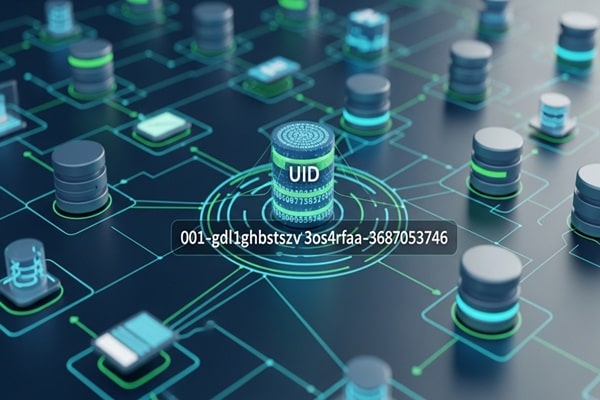Decoding the Power of UIDs: The Role of 001-gdl1ghbstssxzv3os4rfaa-3687053746 in Modern Data Systems
Share your love

In today’s tech-powered world, it’s easy to come across strange-looking alphanumeric strings like 001-gdl1ghbstssxzv3os4rfaa-3687053746. At first glance, it might seem like a jumbled mess of characters. But there’s more to it than meets the eye.
These types of unique identifiers (UIDs) are essential behind-the-scenes players in how websites, apps, databases, and digital systems stay organized, secure, and scalable. Whether you’re in web development, digital marketing, data science, or just curious about how systems work—this guide will give you a clear, easy-to-understand look into the importance of these codes and how they function.
What Is 001-gdl1ghbstssxzv3os4rfaa-3687053746?
This string is a Unique Identifier (UID). It’s a label designed to help distinguish one piece of data from another—whether that’s a user, transaction, session, product, or log entry. These identifiers are used across countless digital environments:
-
In databases to prevent data overlap
-
In APIs to manage sessions and user access
-
In digital marketing to track user behavior
-
In software to debug and trace actions
-
In e-commerce for inventory and order management
If you think of every digital element needing its own name tag, this is exactly that.
A Breakdown of the Identifier
Let’s break 001-gdl1ghbstssxzv3os4rfaa-3687053746 down into its basic components:
-
001: This prefix might represent the version, data type, or a category.
-
gdl1ghbstssxzv3os4rfaa: A randomly generated alphanumeric string that ensures uniqueness.
-
3687053746: Possibly a timestamp or index number to help with tracking or sorting.
This modular format makes it easier for systems to read, organize, and retrieve data without mixing anything up.
Why These Unique Identifiers Matter
1. Data Integrity
In any large-scale digital environment, you need a way to avoid data duplication or confusion. UIDs keep everything clean and distinct, so records don’t overlap or get lost.
2. Scalability
As systems grow—think millions of users or products—these identifiers help everything scale without chaos. They’re reliable markers for expanding platforms.
3. Security
UIDs can provide a layer of protection by making URLs or session data harder to guess or exploit. Randomized IDs are particularly helpful in preventing unauthorized access.
4. Interoperability
Digital platforms often talk to each other. Using consistent, structured UIDs allows systems to share data efficiently, without confusion or conflict.
Real-World Uses for 001-gdl1ghbstssxzv3os4rfaa-3687053746
Software Development
Developers use identifiers like this for debugging, session tracking, managing user accounts, or tracking performance issues. It’s critical for backend stability and transparency.
E-Commerce
Online stores use unique IDs to track every product, order, and customer interaction. They help businesses monitor inventory, manage returns, and personalize customer experiences.
Digital Marketing
Marketers rely on UIDs to track campaign performance, segment audiences, and personalize messages. They’re often hidden in URLs, cookies, or tracking pixels.
Healthcare and Research
In sensitive industries, anonymized UIDs protect user identities while still allowing researchers to follow individual progress or behavior through datasets.
SEO and Analytics
For webmasters and SEO professionals, these IDs can appear in URLs, helping differentiate between pages, products, or campaigns. When used wisely, they support search indexing and user behavior tracking.
Also Read : K Caara Leasing: The Future of Hassle-Free Vehicle Leasing in Finland
Are These Strings Bad for SEO?
Not necessarily. While a UID like 001-gdl1ghbstssxzv3os4rfaa-3687053746 isn’t exactly keyword-rich, you can still make it SEO-friendly with smart formatting.
For example:
Better URL:yourwebsite.com/product/001-gdl1ghbstssxzv3os4rfaa-3687053746-wireless-headphones
This way, the unique ID is included, but the slug is also descriptive and keyword-optimized. You can also:
-
Add relevant UIDs in structured metadata
-
Use canonical tags to avoid duplication
-
Make sure tracking UIDs don’t interfere with page crawlability
How to Generate Identifiers Like This
If you’re building a system and need to create similar UIDs, here are some trusted methods:
-
UUIDs (Universally Unique Identifiers) – Built-in in many programming languages
-
NanoID or Hashids – Good for short, secure, URL-friendly IDs
-
Custom-built ID Generators – Useful if you need platform-specific formatting or features
Just make sure you avoid patterns that could be guessed or reverse-engineered.
Best Practices: What to Avoid and How to Use UIDs Safely
Avoid Predictability
Never create UIDs in a sequence like 001, 002, 003… It makes them easy to guess and compromises security. Randomness is your friend here.
Don’t Include Private Info
A UID should not contain any personal or sensitive data (like usernames or emails), especially if it’s visible in a URL.
Optimize for Performance
If you’re handling large databases, ensure your UID fields are indexed to support fast lookups. Poor indexing can slow down your entire system.
Final Thoughts: Why UIDs Like This Matter in the Bigger Picture
What might seem like a string of random characters—like 001-gdl1ghbstssxzv3os4rfaa-3687053746—actually plays a critical role in keeping the digital world functional. They support the systems behind everything from online shopping and app usage to data privacy and AI analysis.
Understanding these identifiers is about more than just tech jargon. It’s about grasping how today’s most important digital infrastructure stays efficient, secure, and user-focused.
So, the next time you see one of these mysterious strings, know that you’re looking at the invisible thread keeping your digital experiences smooth and secure.






